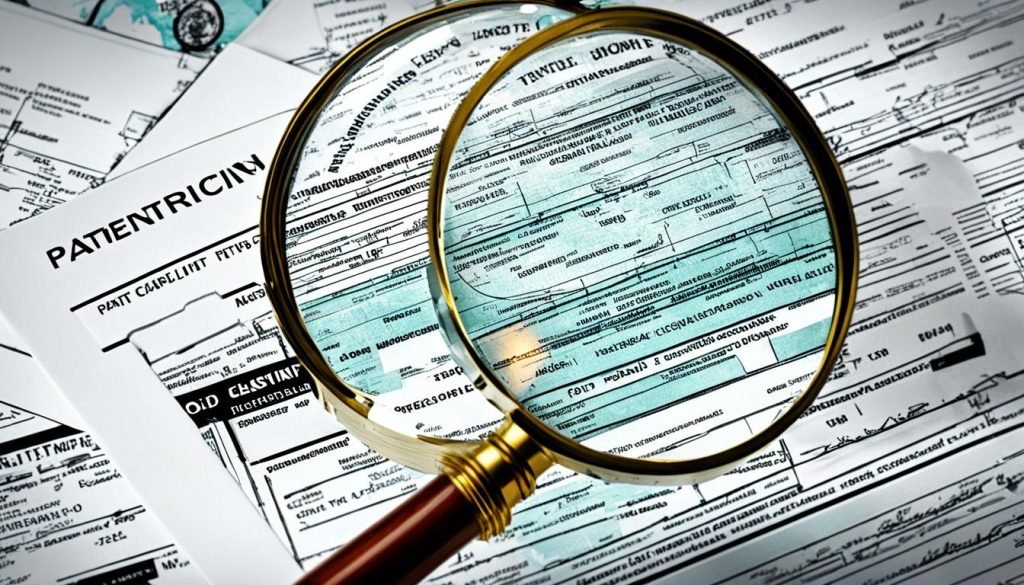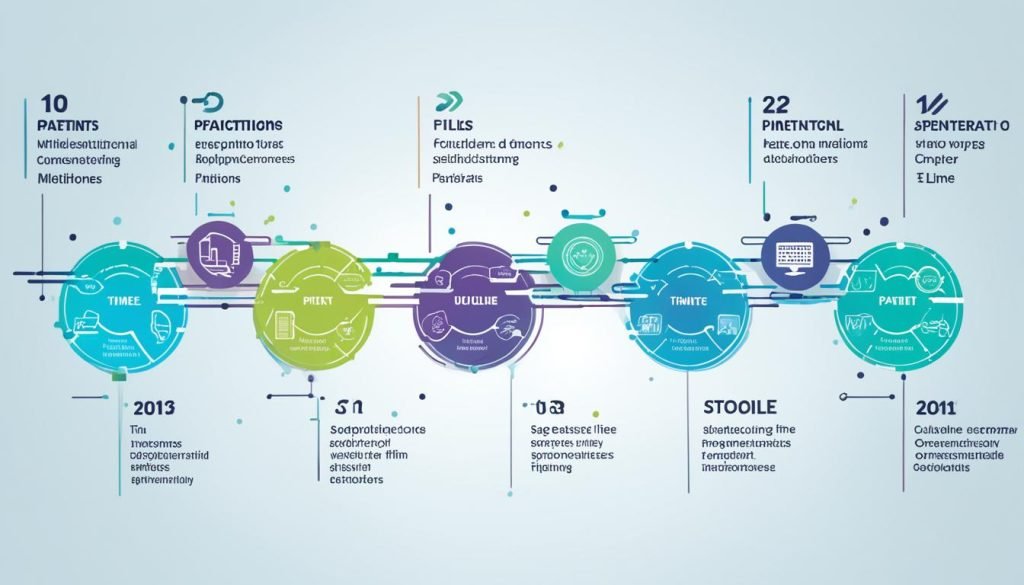In today’s rapidly evolving, borderless marketplace, safeguarding your intellectual property (IP) has become paramount for any forward-thinking business strategy. Patents are a powerful form of IP that protect your innovations and ideas, granting you exclusive rights to your creations for a specified period, typically 20 years. However, the territorial nature of national patents poses a challenge, as they offer robust protection within the borders of the granting nation but provide no defense against infringement beyond those limits. As our businesses expand their reach and our innovations transcend geographical boundaries, the need to protect our intellectual property globally is becoming increasingly crucial.
Protecting your innovations globally involves a strategic sequence of steps, beginning with the filing of a local patent application to establish a priority date, followed by the submission of international patent applications within the one-year window to ensure global consideration as if filed on the original priority date. This strategic maneuver not only simplifies the application process but also maximizes the potential for securing international patents, which are essential for protecting your ideas legally, safeguarding your intellectual property rights, and preventing idea theft and infringement lawsuits.
Key Takeaways
- Safeguarding intellectual property (IP) is vital for any forward-thinking business strategy in today’s global marketplace.
- Patents protect your innovations and ideas, granting exclusive rights for a specified period.
- The territorial nature of national patents poses a challenge, as they offer no defense against infringement beyond the granting nation’s borders.
- Protecting your innovations globally involves a strategic sequence of steps, including local patent application filing and international patent application submission.
- International patent protection is essential for safeguarding your intellectual property rights and preventing idea theft and infringement lawsuits.
Understanding the Patent Cooperation Treaty (PCT)
The Patent Cooperation Treaty (PCT) is an international agreement administered by the International Bureau (IB) of the World Intellectual Property Organisation (WIPO) and covers most of the major industrial countries of the world. The PCT system provides a centralized platform for streamlined international patent application processes, acting as a helpful “buffer period” before applicants commit to filing in specific countries. Unlike national patent offices, the PCT system does not conduct a full examination or grant patents outright, but rather offers a preliminary phase known as the “international phase” that gives inventors insight into the potential scope and viability of their patents.
Advantages of the PCT System
One significant advantage of a PCT application is the deferral of the cost of the national phase applications, allowing applicants more time to explore the commerciality of the invention. The PCT is also an attractive option for applicants who intend to find licensees for their foreign patent rights, as the PCT keeps the options open in many countries and then the licensee can pay the costs of prosecution in any countries in which the licensee is interested. Another advantage is that a PCT application is automatically subject to both search and examination, providing some information for assessing the prospects of obtaining granted patents and their potential scope of protection, before the major filing and prosecution costs are incurred. The PCT system can also be used to manage risk, as if the invention disclosed in the PCT application is subsequently found to be unpatentable, an early decision can be made to withdraw/abandon the application, thereby avoiding the national phase filing costs. Additionally, the PCT system is flexible in that the priority claim can be withdrawn close to the national/regional phase entry deadline, effectively extending the deadline to file national/regional phase applications.
Examination of PCT Applications
The PCT system does not examine patent applications fully, and it does not grant patents. The examination may be without interaction between the applicant and the Examiner (under Chapter I) or with interaction between the applicant and the Examiner (under Chapter II). By default, the examination is performed under Chapter I, which includes the main steps of filing the PCT application, preparation of the International Search Report (ISR) and the Written Opinion (WO) of the International Search Authority (ISA), and the publication of the international patent application, with the ISR and any amended claims which have been filed.
Chapter I: International Search and Written Opinion
During the Chapter I phase, the PCT application is subjected to an International Search, which results in the preparation of an International Search Report (ISR) and a Written Opinion (WO) by the International Search Authority (ISA). The ISR identifies relevant prior art that may affect the patentability of the claimed invention, while the WO provides a preliminary and non-binding opinion on the novelty, inventive step, and industrial applicability of the claimed invention.
Chapter II: International Preliminary Examination
Chapter II is optional and is also known as International Preliminary Examination (IPE). The main steps include the filing of a Demand including amendments and/or arguments to address any objections raised in the WO, and the subsequent preparation of the International Preliminary Report on Patentability (IPRP) under Chapter II. IPE is used to obtain “a preliminary and non-binding opinion on the questions whether the claimed invention appears to be novel, to involve an inventive step (to be non-obvious), and to be industrially applicable”.
Benefits of International Preliminary Examination
IPE gives the applicant the opportunity to evaluate the prospects of obtaining patents in the countries of interested before incurring the expense and trouble of entering the national phase. While the IPRP is not binding on a patent office, it carries considerable weight and a favorable report will assist the prosecution of the application, as the application will generally proceed rapidly to the grant of a patent where the IPRP is favorable. Additionally, obtaining a clear IPE can be of benefit to licensees, who can take some comfort from a clear report and make commercial decisions based on the likely scope of the claims.

Protecting Your Ideas Legally
Protecting your ideas legally through international patent protection offers robust safeguards for your inventions, shielding them from unauthorized exploitation across multiple markets. Patents are a form of intellectual property that grant inventors exclusive rights to their creations, provided they meet stringent criteria such as utility, novelty, and non-obviousness. However, the territorial nature of national patents poses a challenge, as they offer no defense against infringement beyond the borders of the granting nation. As businesses expand their reach and innovations transcend geographical boundaries, the need to protect intellectual property globally is becoming increasingly important. Securing international patent protection involves a strategic sequence of steps, starting with the filing of a local patent application to establish a priority date, followed by the submission of international patent applications within the one-year window to ensure global consideration as if filed on the original priority date.
| Intellectual Property Rights | Description | Key Benefits |
|---|---|---|
| Patents | Exclusive rights granted to inventors for their novel, non-obvious, and useful creations | Prevent unauthorized use, manufacture, or sale of the patented invention; provide a legal basis to take action against infringers |
| Trademarks | Distinctive signs that identify the commercial source of goods or services | Protect brand identity and prevent consumer confusion; allow for legal action against counterfeiters |
| Copyrights | Rights granted to authors and creators of original works of authorship, such as books, music, and software | Prevent unauthorized copying, distribution, or adaptation of the copyrighted work; ensure artists and authors are compensated for their creations |
| Trade Secrets | Confidential business information that provides a competitive advantage | Protect valuable proprietary information from being disclosed or used by competitors; maintain a commercial edge |
By understanding and leveraging the various forms of intellectual property rights, such as patents, trademarks, copyrights, and trade secrets, businesses can develop a comprehensive legal protection strategy to safeguard their ideas and innovations on a global scale. This may involve the use of licensing agreements, non-disclosure agreements, and diligent monitoring for potential infringement lawsuits to proactively defend against idea theft and maintain a competitive advantage in the marketplace.
The International Phase
The international phase begins with the initial filing of a PCT patent application and the subsequent entry into the National/Regional Phase. This intermediate stage is marked by two key chapters that shape the PCT application process.
Chapter I Phase
The Chapter I Phase commences with the filing of the PCT application, followed by the preparation of an International Search Report (ISR) and a Written Opinion by the International Search Authority (WOISA). If no request for an international preliminary examination is filed, the Written Opinion becomes the International Preliminary Report on Patentability (IPRP) under Chapter I.
Optional Chapter II Phase
The Optional Chapter II Phase is the second stage in the PCT patent application process, which occurs if the inventor decides to file a Demand for international preliminary examination. During this phase, inventors have the opportunity to present amendments and arguments to address any objections raised in the Written Opinion, with the goal of resolving any outstanding issues and refining the patent application further. The result of the Optional Chapter II Phase is an International Preliminary Report on Patentability (IPRP) under Chapter II.

From International to National Phase
As the PCT application process progresses, the next crucial step is transitioning from the international phase to the national/regional phase. This marks a strategic juncture in the pursuit of global patent protection for your innovations.
Entering the National/Regional Phase
The normal deadline for entering the national phase or regional phase is 30 or 31 months from the priority date, although it is possible to enter the national/regional phase “early”, before the deadline. The requirements for entering the national/regional phase vary for each country or region, and typically involve appointing a foreign attorney to handle the application, filing formal documents signed by the inventor/applicant, and paying official fees to the patent office of that jurisdiction.
Once the national/regional phase application is filed, it is handled and examined according to the usual treatment of patent applications in the countries or regions involved. It is crucial to observe all the local time limits, laws, rules, and procedures to ensure a successful transition into the national/regional phase of the PCT application process.
Filing Strategies: PCT vs. Paris Convention
When it comes to extending patent protection outside the United States, U.S.-based companies have two primary options: the Paris Convention and the Patent Cooperation Treaty (PCT).
The Paris Convention Route
The Paris Convention allows you to use your U.S. application filing date as the effective filing date in one or more foreign countries, provided you file in those countries within a year of your U.S. filing. This route is typically recommended when you know you want to seek
PCT filing
protection in only one to two countries outside the United States, and when
speed
is critical.
The PCT Application Route
In contrast, the
PCT application
provides a “buffer period” before you have to begin the national stage, which is often the most expensive part of the process. The PCT also provides an initial round of
examination
, so that you can evaluate the likelihood of success before incurring the cost of national stage filings. We generally recommend the
PCT filing strategy
, as it defers costs and provides valuable insights, unless you have a specific need for
speed
The choice between the Paris Convention and the PCT ultimately comes down to weighing the
advantages and disadvantages
of each
filing strategy
based on your specific business needs and priorities.
Choosing the Right Countries
Determining where to file for patent protection outside the United States requires a strategic approach that considers several key factors. First and foremost, we must assess our business needs and the relevance of our technology to various foreign markets.
This involves carefully evaluating the locations where our business, our competitors, or our potential licensees have operations or customers. We should also consider the countries owned by venture capitalists or larger companies that might invest in our business.
Assessing Your Business Needs
When evaluating potential target countries for our patent protection, we need to thoroughly assess the significance of our technology to each foreign market. This includes analyzing the size of the market, the growth potential, and the overall strategic importance of that region to our business. By aligning our patent filing strategy with our core business objectives, we can ensure that our international patent protection efforts are optimized to support the long-term success of our organization.
Evaluating Your Competitors
Analyzing the patent protection strategies of our competitors can provide valuable insights into key markets and emerging trends in our industry. By understanding where our competitors have chosen to file for patent protection, we can identify strategic opportunities to differentiate our innovations and strengthen our competitive position. This competitive analysis can help us make informed decisions about the countries we should target for our own international patent filings.
Budgeting for Global Patent Protection
Securing patent protection outside the United States can be significantly more expensive than a domestic application. Typically, it’s recommended to budget between $15,000 and $50,000 per country over the 20-year life of the patent. This budget should include official filing fees, translation costs, legal fees, and maintenance fees. By carefully planning our global patent protection budget, we can ensure that our international filing strategy aligns with our financial resources and long-term business goals.
Timelines and Deadlines
When filing a patent application, it’s crucial to stay on top of all dates and deadlines to ensure your applications are submitted in a timely manner. Missing a deadline can render your application worthless. If your business operates in a fast-changing industry where your product may lose its competitive edge within a few years, you may prefer to file under the Paris Convention to obtain a patent grant and monetize your technology as soon as possible. However, if cost is a concern, the PCT application route may be more suitable, as it defers the major costs associated with the national phase filings.
Prioritizing Speed vs. Cost
For businesses in rapidly evolving industries, prioritizing speed over cost may be the optimal strategy. The Paris Convention route can help you secure patent protection and start monetizing your invention more quickly. Conversely, the PCT application process offers a more cost-effective approach by deferring the significant expenses related to national phase filings. Carefully weigh your business needs, the timelines of your industry, and your available budget to determine the best filing strategy that balances speed vs. cost.
Foreign Filing License Requirements
Under U.S. law, inventors who have created their inventions within the United States must obtain a foreign filing license before they can file a patent application outside the United States. The U.S. Patent and Trademark Office automatically evaluates each new U.S. patent application as a request for a foreign filing license, but in some cases, it can take several months to obtain this license. It’s crucial to plan accordingly and factor in the time needed to secure the foreign filing license, as failing to do so can jeopardize your international patent protection efforts.

Conclusion
Protecting your ideas legally through international patent protection is crucial in today’s global economy, as it offers robust safeguards for your inventions, shielding them from unauthorized exploitation across multiple markets. The Patent Cooperation Treaty (PCT) system provides a centralized platform for streamlined international patent application processes, acting as a helpful “buffer period” before applicants commit to filing in specific countries. While there is no single “international patent” that protects your IP globally, leveraging tools like the PCT makes the journey more manageable and marks a strategic juncture in the pursuit of global patent protection.
By understanding the examination process, filing strategies, and key considerations in choosing target countries and managing timelines and deadlines, we can develop a comprehensive international patent protection strategy that aligns with our business goals and safeguards our valuable innovations on a global scale. Protecting your ideas legally, leveraging the advantages of the PCT system, and strategically choosing filing paths and target markets are all crucial steps in ensuring your inventions are shielded from unauthorized exploitation worldwide.
Ultimately, investing in international patent protection is a strategic move that can pay dividends in the long run, allowing businesses to maintain a competitive edge, secure their intellectual property, and expand their reach in an increasingly globalized marketplace. By taking the necessary steps to safeguard your ideas legally, you can position your company for sustained success and growth, both domestically and internationally.

